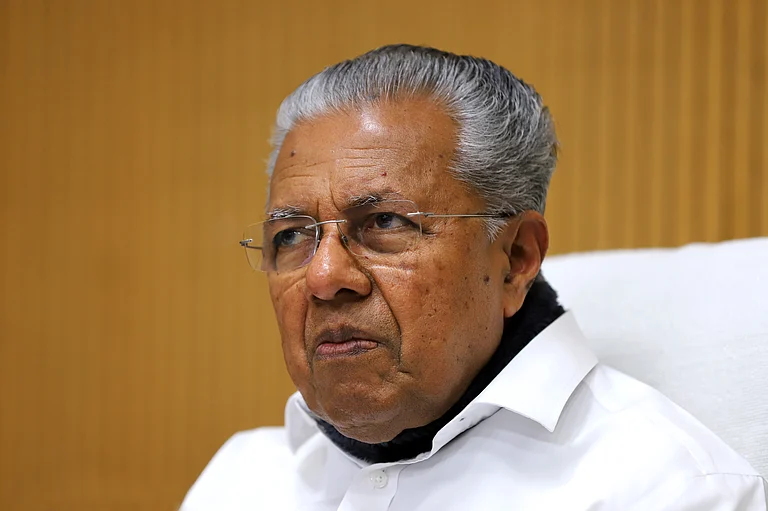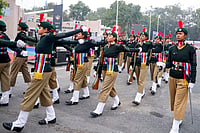Chorla Ghat
There is a winding road that heads out of Panjim that is much celebrated among nature lovers. Chorla Ghat is a part of the Sahyadri range of the Western Ghats, and stands at a mean elevation of 800m above the sea. The Mhadei Research Center here monitors the Mhadei region’s biodiversity and researchers have recently discovered a new species of limbless serpentine amphibian named Ichthyophis davidi. Unmissable at Chorla are the roaring twin waterfalls of Vajra–Sakla, where the river Valvanti cascades down almost 150m into two distinct cataracts.
Chorla Ghat is on the State Highway 4, 56km from Panjim and 58km from Belgavi.
Araku Valley
Located about 900-1,400m above sea level, Araku Valley is one of those ‘salubrious’ places they always talk about. The valley is home to a number of indigenous tribes that were some of the earliest inhabitants of the peninsula, and the contiguous tracts of these forests still ring with their ways and traditions. Quite naturally, the British, who had a nose for these hidden gems, introduced coffee to these hills in the 1920s. A fine way to see Araku is to take the train to Kirandul: 58 tunnels, 84 bridges, waterfalls, streams, thick forests and the incomparable Anantagiri Hills.
Araku is 112km/4 hours from Visakhapatnam by road. The Visakhapatnam–Kirandul Passenger runs daily.
Surguja
In the north of Chhattisgarh lies the former princely state of Surguja, a district that sprawls over beautiful mountainous terrain and houses populations of various Central Indian tribes. Its capital was Ambikapur, one of the state’s largest towns. On the road from Ambikarpur to Bilaspur is a 12th-century Nagara-style temple that Sarguja is famous for. It is dedicated to the local deity Mahamaya Devi—a dual statue, so to speak, with Mahishasuramardhini in front and Saraswati at the back. This is said to be a shaktipeeth, one of the 52 temples across the sub-continent that worship the divine feminine.
Ambikapur is 338km from Raipur.
Munsiyari
The northern valleys of the Kumaon region, where mighty rivers pour out of giant Himalayan glaciers, are some of the most picturesque in the Western Himalaya. None more so than the Gori Ganga valley, also known as the Johar valley, that descends from the Milam glacier. On a spur 2,200m high, overlooking the valley lies Munsiyari, the ‘place of snow’. The charming old town is famous for its spectacular views of the Panchchuli range, and you get even grander vistas if you hike up to the bugiyal on the top of the Munsiyari ridge. It’s the base for the Milam glacier, the Nanda Devi East BC and Panchchuli BC treks. In Munsiyari, check out Masterji’s Museum for information on the local Shaukya people, the Bhotiyas and the valley’s old trade links to Tibet, and check out the Birthi falls.
Munsiyari is 275km by road from Kathgodam station.
Kanger Valley
The spectacular Kanger Valley is one of the few pockets of untouched forest left in India. This 200sq km park has everything: dense forest, a fascinating range of flora and fauna, a labyrinth of subterranean limestone caves, land formations that range from low flatlands to steep slopes, valleys and streams... breathtaking vistas at every turn. The fact that the Kotumsar cave holds rare, endemic troglobite cavefish just adds to the mystique. Don’t miss the stunning 300ft Tirathgarh falls, do catch sight of the Bastar Hill Myna and add a cave walk to your itinerary!
The park is 305km/7 hours from Raipur and about 38km from Jagdalpur.
Kanatal
Instead of heading to Mussoorie, why not pick the quieter, pastoral quaintness of Kanatal that lies just an hour away? Fancy dining by the riverside and shepherding adorable mountain goats? For those with a thing for living off-grid and in complete contact with nature, Kanatal is perfect. The rustic hill retreat is home to to farmstays that, with their Koti Banal-style cottages, replicate indigenous living and country life really well. Trek to the nearby villages, go apple plucking in the orchards, and witness glorious sunrises and sunsets cocooned in the serenity of the Himalayas. About a kilometre away from Kanatal is the dense deodar-and-pine forest of Kodia, another popular spot to get close to natural springs and rolling hills, just like the king of Tehri once used to. Go birdwatching, pick pine cones and if lucky, you could even spot barking deers, gorals, and wild boars.
Kanatal is 49 km from Mussoorie in the Tehri Garhwal district of Uttarakhand.
Jhalana
Nestled quietly in the lap of the Aravalli Hills lies the Jhalana Leopard Reserve. Just 10 kilometres away from the heart of Jaipur, it is the city’s best kept secret that finds its way on the itineraries of only the most avid wildlife enthusiasts, often shadowed by the more popular Ranthambore National Park just three hours away. And it is only through a chance encounter with a man from Jaipur that I end up in Jhalana, still hungover on my trip to Ranthambore where I spotted three tigers.
With an area of 23 square kilometers, Jhalana is said to be the world’s most densely populated leopard reserve, with almost 40 leopards calling the reserve their home. There are almost two leopards for every square kilometer. For this reason, tourists are almost always assured of sighting at least one leopard, although the average tourist generally spots more of them on a good day.
Jaipur's railway station is located at around 13.5 km from the park
Harike Wetland
A wetland is defined as a terrain knee-deep in water, and in India, the Harike Wetland located in Punjab is the largest. It is man-made, and serves the purpose of providing enough water to the visiting animals and birds. Imagine this—a vast stretch of water with scattered patches of verdant flora seeming like a miniature version of our planet itself. Visit the Harike Bird Sanctuary that is accessed from Ferozepur. While it is a sanctum for numerous endangered bird species, the wetlands also support animals such as the mongoose, the Indian wild boar and the jackal.
Ferozepur Cantonment is the nearest railway station to Harike.





















